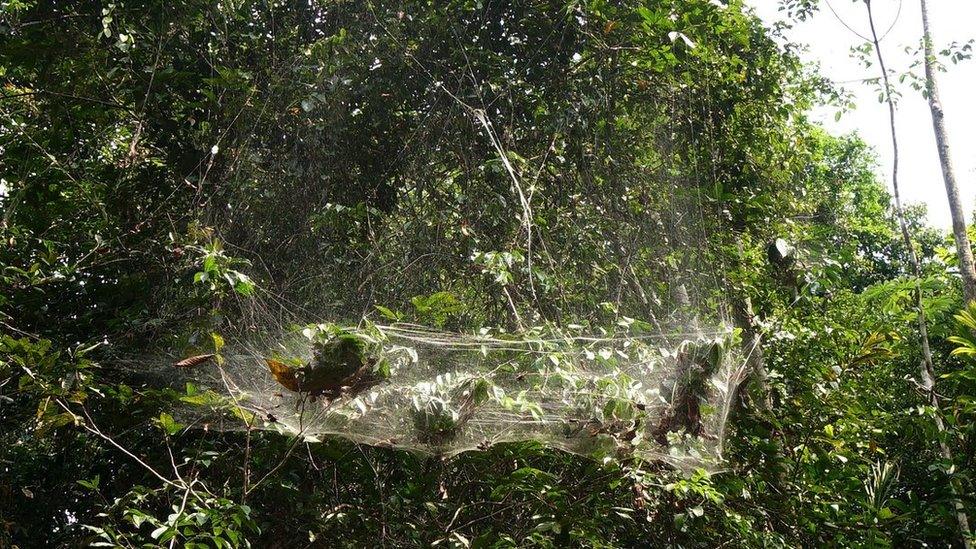Social spiders found to hunt in packs in giant webs
- Published
- comments

Library photo of an enormous Anelosimus eximius web that is home to community of social spiders
Scientists have found that a species of spider stalks their prey in large "synchronised" attacks in giant spider webs!
That's according to a new study by researchers from the University of Toulouse and the French National Centre for Scientific Research (CNRS).
Only 20 of the 50,000 different types of spiders found on Earth are known live together in social communities or groups.
The Anelosimus eximius, found in French Guyana, is one of them and they hunt in huge packs totalling thousands of spiders.
Another social group are social huntsman spiders - or Delena cancerides - as many as 300 can live together
There are 60 known species of group-living spider and 42,000 different spider species in the world.
The scientists looked in particular at the Anelosimus eximius and their massive webs to find out more about how these spiders hunt for food.
They found that when prey entered their web, the social spiders worked together to attack as one larger force rather than as individual spiders.
Anelosimus eximius spins webs that stretch for several metres and contain over 10,000 spiders
They do this by each feeling the vibrations from the web, synchronising their movements and this makes it easier to catch their moving prey.
The study was published in the Proceedings of the National Academy of Sciences (PNAS).
If you cannot see the interactive activity on this page, click here.
- Published16 August 2018
- Published16 March 2017
- Published15 March 2016
